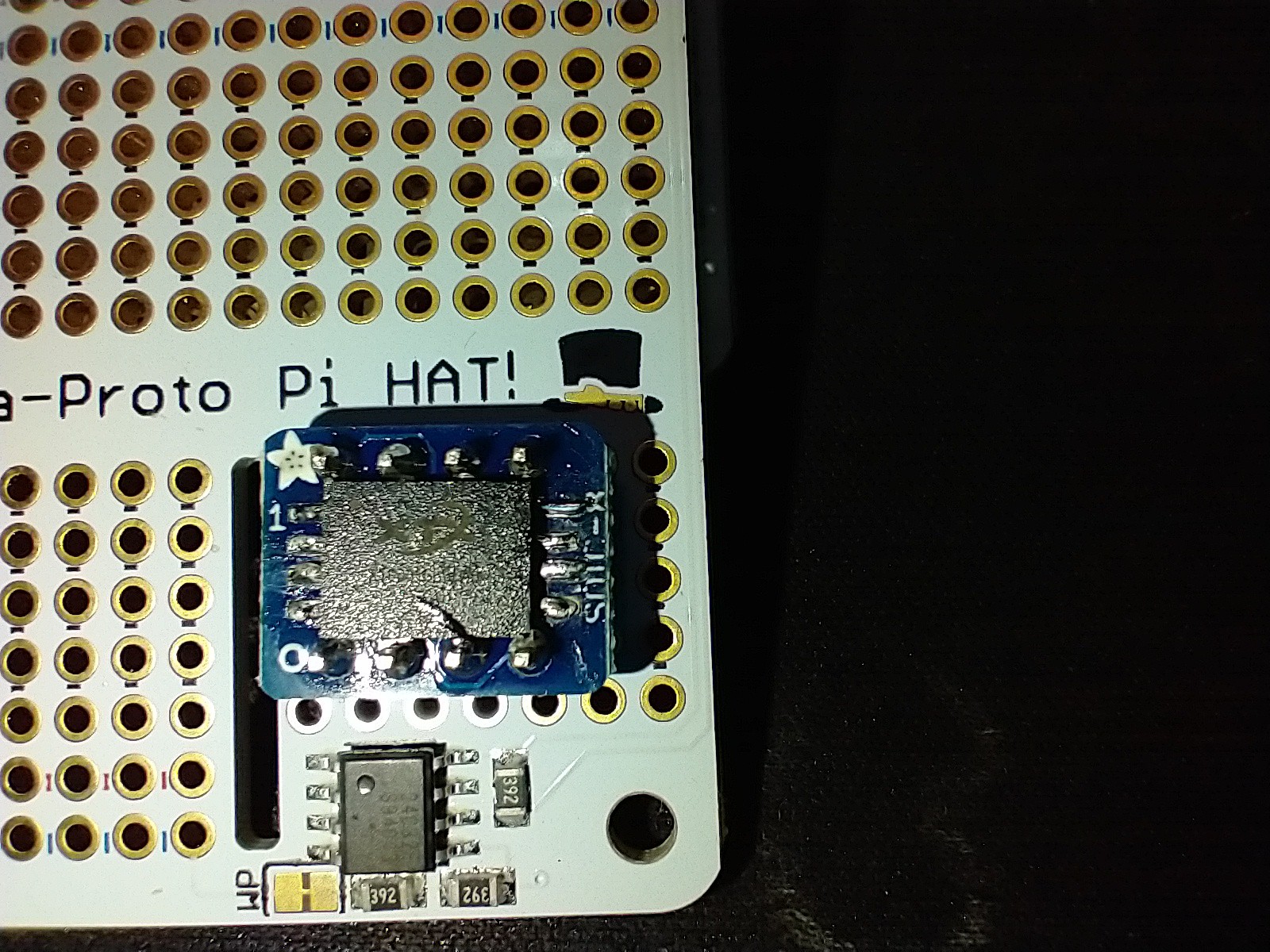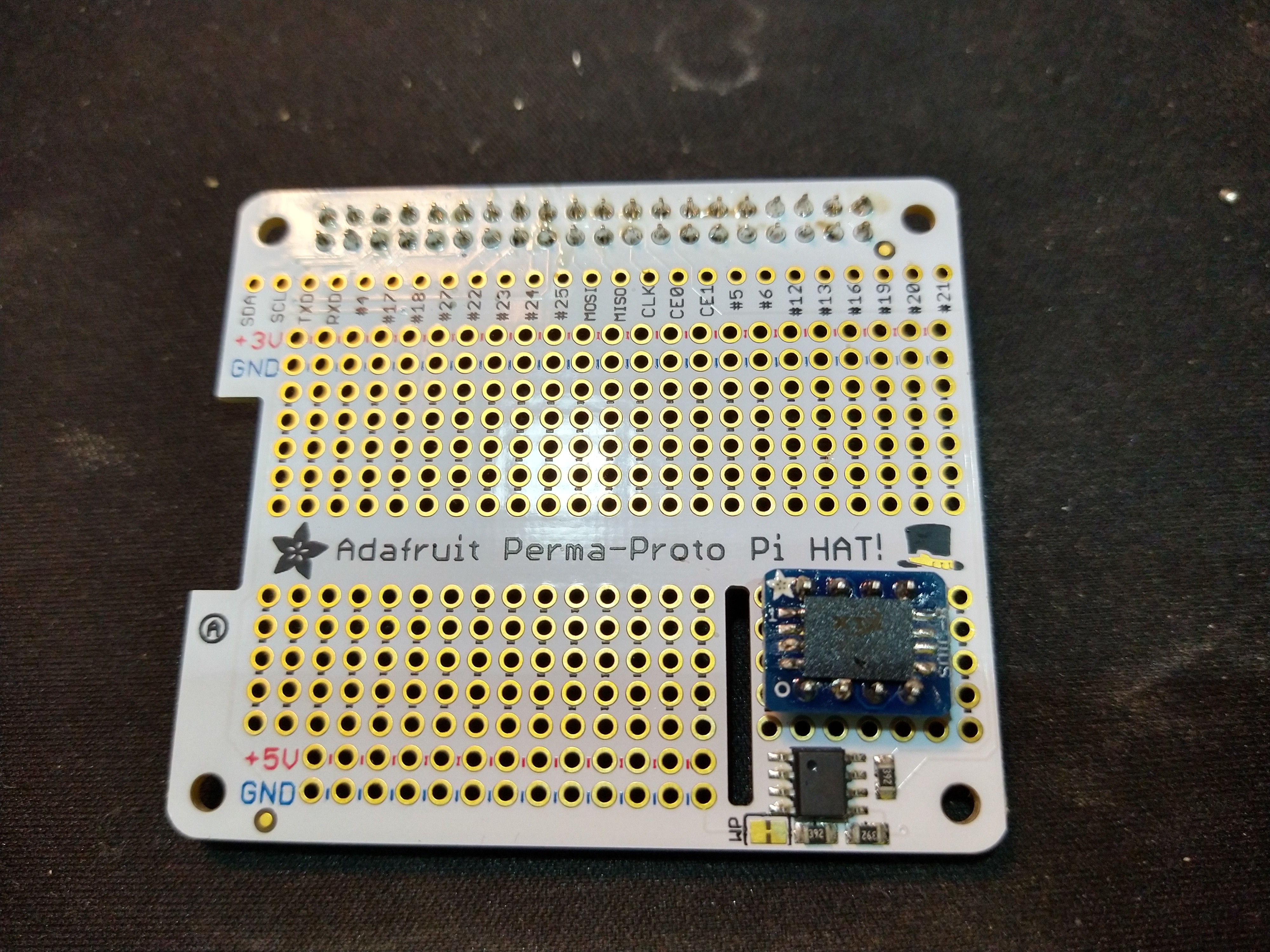

I FINALLY got around to soldering one of the memory chips to the adapter board. I'm not good at soldering, my soldering iron sucks, the tip is messed up, and my hands shake very badly, but I got one of the two done. This was actually a very sad endeavor for me. I've never had my hands shake like this when working before. My dad has Cerebral Palsy and he can't even manage a fork most days. He's known for his hands shaking so bad that it scares children. I don't think I've got it, but you just never know. It worries me. I suspect it's either the coffee I had, nerves for the project, or maybe something to do with my body. I've been driving a tow truck a lot lately and it messes up my body quite badly. It's hard to say, but it shows me that I'm not going to be assembling these boards by hand for any sort of production run. More motivation for me to get a custom PCB designed and manufactured. I'm quite excited for that part. It will be nice when I can just place an order and have a stack of carts arrive instead of hand soldering and wiring prototypes.
I've got the SD memory chip soldered to the adapter board, which was already soldered to the prototype HAT board. I haven't wired it up yet. That requires me to map out the wiring. These HAT boards aren't designed for the Pi 400, so I have to verify the pinout. I should just do that now, but I'm quite tired and soldering that expensive, tiny chip was surprisingly stressful. I've never soldered TSOP chips before, so that has much to do with it.
My Pi 400 and Pidock 400 should arrive tomorrow, so I'll get started on the wiring sometime after it arrives. Right now I've got the 1GB chip soldered, and I think I'll try the 8GB chip next. I started with the 1GB as it was cheaper. If these work well, I'll place another order for more of the memory chips and prototype boards so I have a bunch to work with. I've got so many ideas for this project that it's overwhelming at times. The best place to start is with just getting one of these to work. After that I'll figure out how to install a Linux program to the memory chip and get that running over the GPIO port without installing any local files. Even if I have to use a portable version of a file, it will be nice to get in an easy win right away. I need those when working on projects of this scope and scale. I'm no expert in any of this, just figuring it out as I go.
While taking my hour long walk to pick up my tow truck today, I had an idea relating to this project. I'd like to work my way up to building a VR headset for the Pi and developing some games. I may be able to make it a simple USB device, but could have it connect to a special cart if needed as well. Just a fun thought that wouldn't have occured to me had I not decided to walk today. Driving a tow truck destroys my body and clouds my mind, so the walk helps me reset things. These projects of mine help keep me sane and busy. Otherwise I find myself rather depressed and overwhelmed. I'd love to bring VR to those who can't afford a fancy setup. Even without fancy graphics it would be fun. Minecraft on a VR headset with motion sensing headset and controllers comes to mind. I used to play VR games with a friend at his house. I spent 7 hours playing Vanishing Realms one day. I was so immersed and content that I forgot I was playing a game. It was weird and fun. I'll have to make a whole new project page for this idea if I get around to it. That just requires me to know what the Pi hardware is capable of, what technology is available, and to acquire more programming skills. All of that will come with time as I work on this project.
I think I'll make a new project page for every cart and accessory I make for the Pi once I get the fundamentals finished on this one. I could just keep adding to this page, but it's not simple updates. Some game carts will have special hardware, such as atmospheric pressure sensors that will change the weather in the game based on real conditions. That's worth documenting on its own page.
Anyway, I've got one cart prototype nearly complete and I give it a 50% chance of working based on my terrible soldering job. I'll have my Pi laptop tomorrow and will start researching the wiring needed to connect the adapter board to the GPIO pins and get the software installed for basic SD functions. If it works, I'll start software development and PCB development. I suspect these memory chips are obscure enough that the global chip shortage may not effect them too much. I'll also develop an SD cart to be safe. SD cards are very easy to get and it would be nice to add a second SD card to the Pi without hogging a USB port. Much progress has been made, and I feel better about this project than ever. I haven't actually been happy and excited about something in a very long time. It's a sign that I'm doing what I'm supposed to with my life.
As I was proofreading this post, I looked at the prototype board and realized that I soldered the TSOP to DIP adapter on facing the wrong way. The pins across from one another are connected together. I can either desolder it and turn it, or cut the traces. I have my iron hot and my knife handy so both are simple options. I'll desolder it and do it right though. Such a dumb mistake I suspect was made out of excitement. I didn't familiarize myself with the board before I stuck the adapter on it. I'm still working on managing my emotions, though excitement is quite a nice one to have. Just gets in the way of serious business here and there. Oh well. Easy enough fix. I'm not retaking the pictures, so the ones above will not be accurate. I've got no idea when I'll have to go out and tow, so I just want to get this published and the boards fixed as quickly as I can.
More updates coming very soon.
Discussions
Become a Hackaday.io Member
Create an account to leave a comment. Already have an account? Log In.